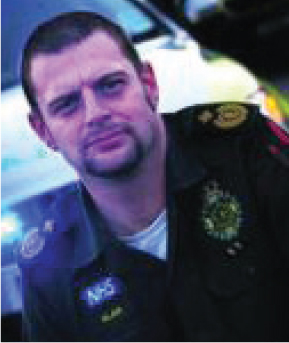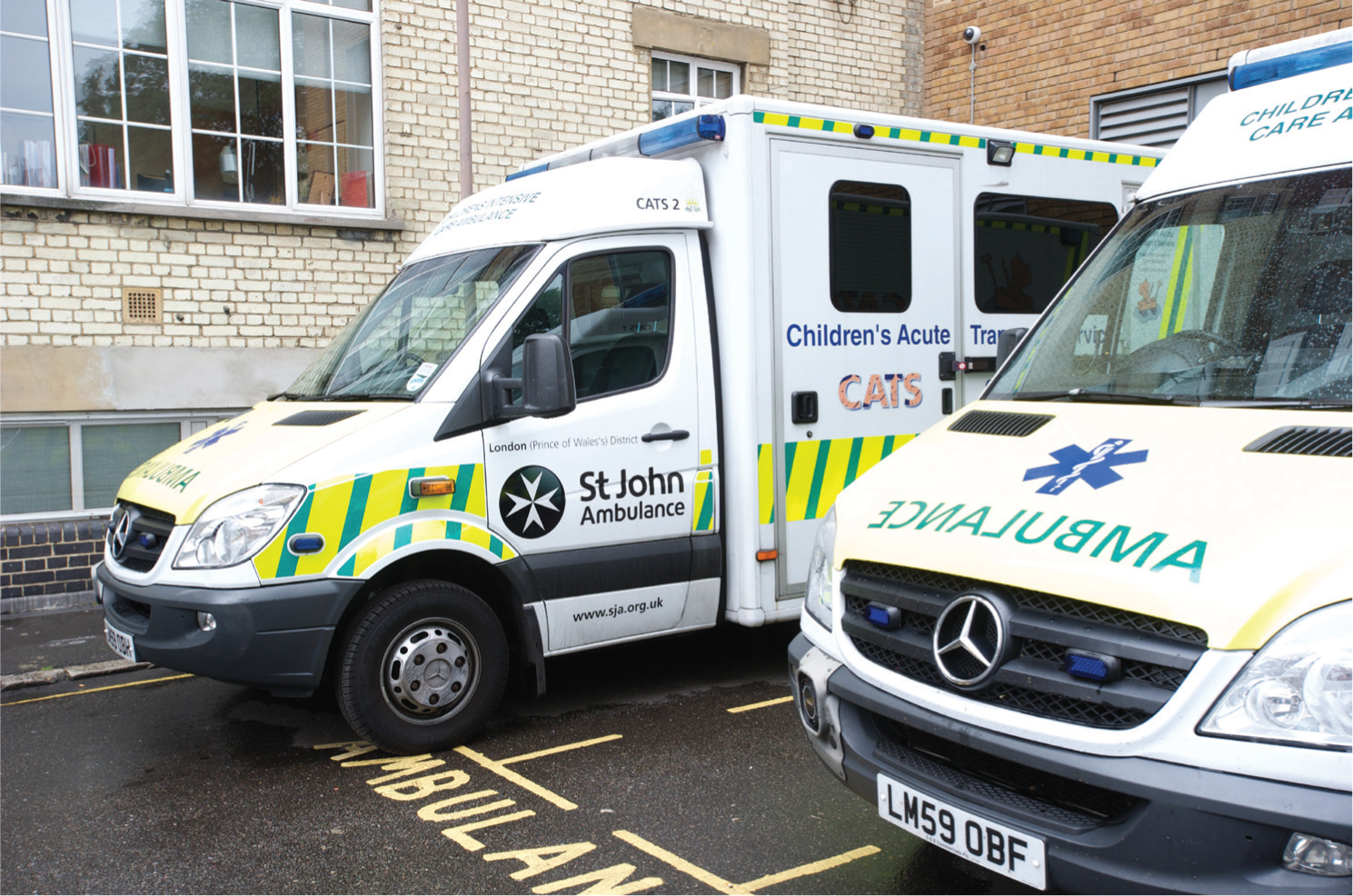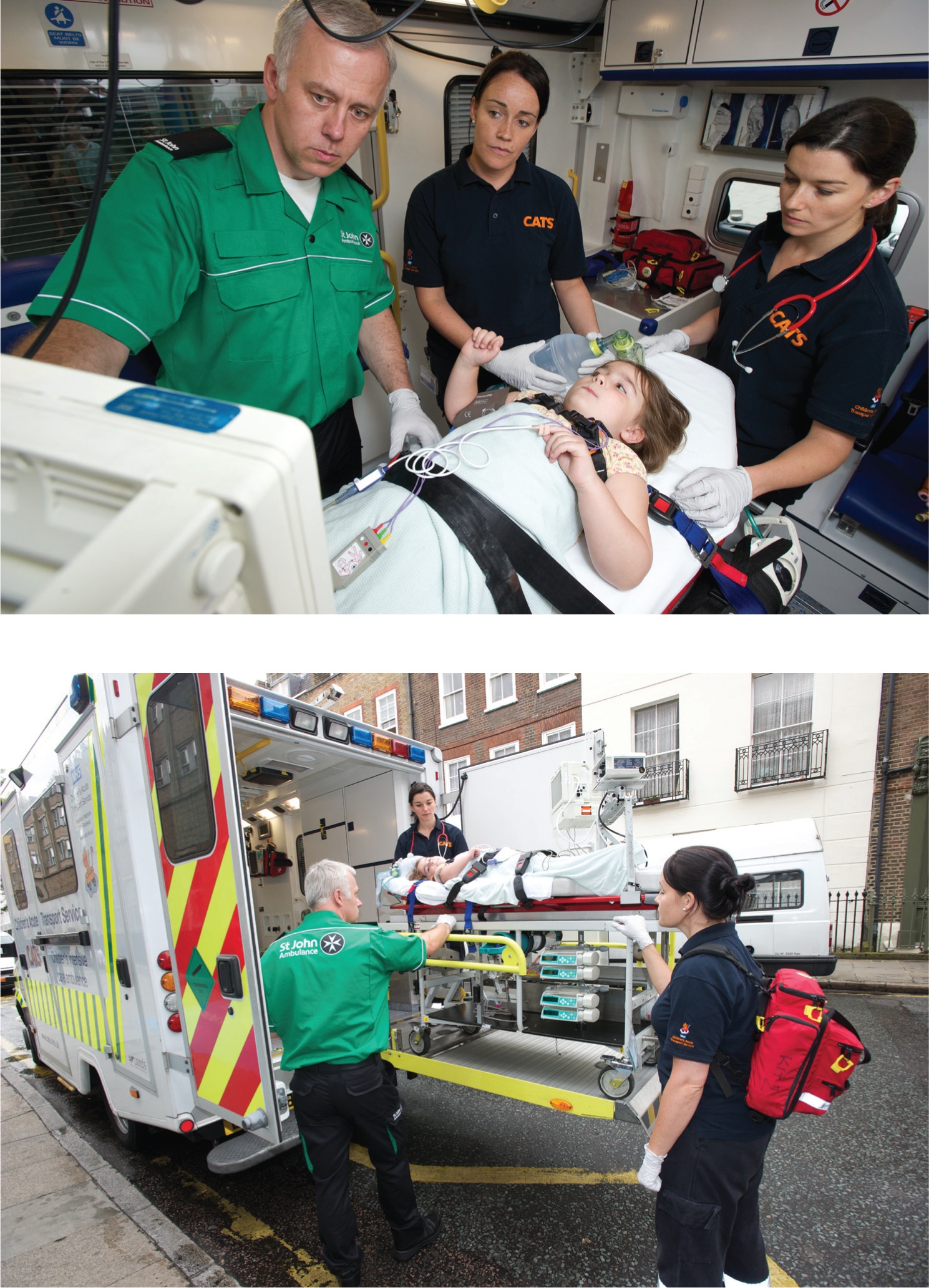
The Children's Acute Transport Service (CATS) is a specialist paediatric intensive care service operating in the North Thames and East Anglian areas of the UK. It is a collaborative service commissioned and funded by NHS England and hosted by Great Ormond Street Hospital for Children, in collaboration with The Royal Brompton Hospital and St Mary's Hospital. The transportation element has been provided by specialist crews from St John Ambulance since 2003 (NHS England, 2013).
CATS was the first specialist, independent transport service of its kind in the UK and aims to make paediatric intensive care rapidly available to critically ill children across approximately 50 hospitals. Set up in 2001, it is one of the largest paediatric retrieval services in Europe and has been referenced as a model for the implementation of specialist transport and retrieval services subsequently in the English NHS and beyond (Scottish Government, 2011). The service is a holistic service and not all contact will result in transportation or even deployment of a team of specialist clinicians. The team is available 24/7 for the provision of telephone consultation, inter-hospital liaison and, where necessary, rapid activation to the bedside of a sick child and fully supported retrieval transportation to and between hospital intensive care facilities.
Paediatric intensive care (PICU) is only provided at a small number of sites due to the skills, infrastructure and services required to deliver it safely and effectively. However, the majority of sick children initially present to hospitals which do not have this facility available on site. The CATS service is able to deliver the service to the patient and, where required, safely and speedily transport the patient to an appropriate receiving hospital with the required facilities and specialties available.
St John Ambulance and the Children's Acute Transport Service
St John Ambulance (SJA) is the sole provider of ambulance services to the paediatric retrieval team at CATS and the crews providing the service are based on site at the Great Ormond Street Hospital. St John Ambulance has just won the contract to continue this service for a further 5 years through until June 2020.


The service consists of a dedicated team of 13 ambulance technicians. The ambulance team is fully integrated into the retrieval team and works as an integral part of the service. The current service provision is ambulance technician-led rather than paramedic-led at this time, recognising that the specialist retrieval team provide the advanced clinical care that each child needs. However, the crews based at the site are able to train alongside the clinical teams of the service and are an integral part of the service provision from beginning to end of a retrieval.
By permanently working in the paediatric environment the crews have extended skills and experience specific to the type of work that they undertake on a daily basis, including assisting in the provision of advanced skills by the doctors and nurses who make up the team on a retrieval. Some of this skill is in the more holistic area of the retrieval process. As they are additional to the clinical team, the SJA ambulance staff can use their experience to reassure and support parents and carers of the sick child at what is without exception an extremely emotive time. The ambulance crew are there with the child and the parents throughout the journey.
The CATS team uses six Mercedes Sprinter 519 CDI ambulances and one rapid response vehicle designed by the lead consultants from CATS and South Thames Retrieval Service (STRS) specifically to support the care of critically ill children. The current vehicles are built by WAS in Germany to a bespoke design to meet the needs of paediatric intensive care transportation. The current fleet will be replaced in a year as part of the new contract arrangements. The WAS vehicle is fully CEN compliant and provides a large patient treatment area with tail lift and secure mounting for a wide range of transportation devices. The vehicles carry a full range of monitoring and ventilation support including air and oxygen. The CATS and STRS services were the first in the UK to routinely carry nitric oxide on all retrieval ambulances, which is an intrinsic part of safe patient management. Additionally, SJA was also the first provider to be able to offer a parent a seat on a retrieval vehicle to accompany their child through to intensive care. The vehicles are commissioned specifically to the service and are therefore exclusively available solely for deployment on emergency paediatric retrievals.
The provision of a response car to the service allows for the retrieval team to be deployed with early intervention equipment to the requesting hospital quickly and safely, while the ambulance vehicle is prepared and deployed subsequently to the requesting hospital ready for the transportation. The team are averagely mobilised and en-route to the patient 17 minutes from time of accepting a referral. This figure has been reducing year, on year representing the continuing improvement that the well trained and familiar crew strive for in delivering this service. The service aims for a 3-hour timeframe to be at the sick child's bedside, achieving this in 82% of cases in 2014–5.
Since the SJA service began in 2003, SJA have transported more than 30 000 critically ill children to intensive care, ensuring they receive the specialist treatment they need while stabilised and accompanied by skilled clinical staff (SJA, 2015). The service need continues to increase year on year. In 2006–2007 1 099 retrievals were carried out. In 2014–2015 this had risen to 1 206. The CATS service does not deploy to all incidents and around 50% are managed with remote telephone support or through other services which do not require attendance and transportation.
The most common cause for referral/transportation was respiratory (33% of referrals) followed by cardiac (19%). Of those transported, 76% were ventilated during the journey. 27% of patients needed ionotropic agents and 4% needed inhaled nitric oxide during transportation (CATS, 2015).
In 2010, SJA was awarded the Best Private Ambulance Team award by the Ambulance Services Institute International for the work carried out with the Children's Acute Transport Services and the South Thames Retrieval Service. The CATS model has been utilised in many areas across the NHS in England and based on the successful experience delivering this service in London SJA, now provide similar services in East Anglia, the West Midlands, Thames Valley and Wessex areas. The benefits of the separate provision of services allows the delivery of a constantly available, specialist transport resource that can be rapidly deployed to referrals. As the vehicles and crews are not deployed on any other activity they are constantly available and not susceptible to operational pressures from other ambulance activity, such as high levels of emergency (999) and urgent ambulance activity that may severely impact on response times if reliance for a transport system if placed on the commissioned NHS emergency ambulance contract.

